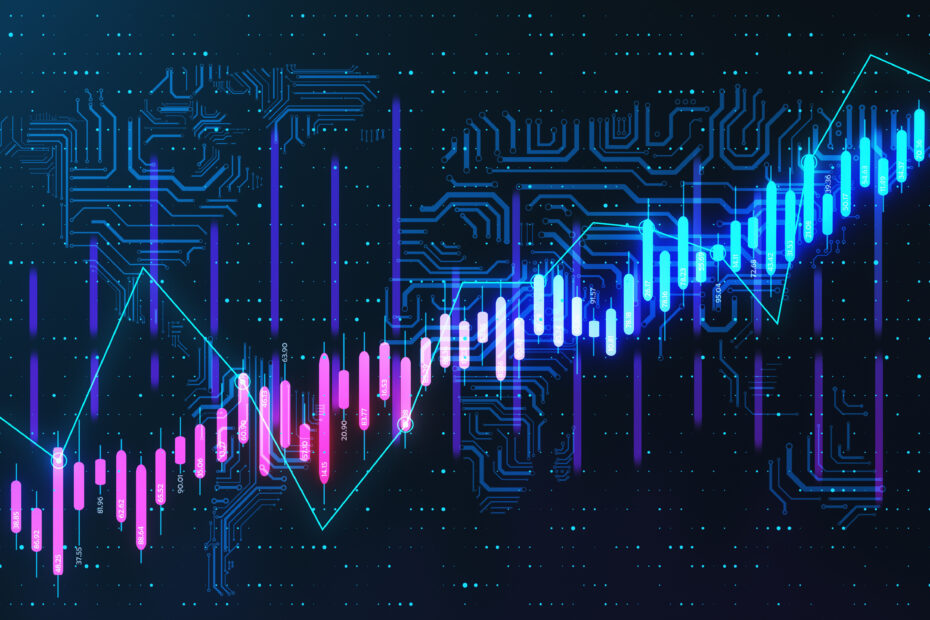In the labyrinth of the financial world, where microseconds can mean the difference between profit and loss, algorithmic trading has emerged as a cornerstone. This high-stakes realm, previously dominated by human intuition and split-second decisions, has witnessed a transformative shift. Today, it’s not just about speed but precision, predictability, and intelligent decision-making — hallmarks of Artificial Intelligence and Machine Learning. As the gears of high-frequency trading whirl at dizzying speeds, there’s a silent revolution steered by AI-driven strategies, heralding a new epoch in the evolution of trading algorithms.
The Emergence of AI and ML in Trading
Long before the sophisticated neural networks and adaptive AI models we see today, trading was a domain led by basic algorithms. These rudimentary tools, though efficient for their time, were restricted by their linear nature. However, as markets became more volatile and intricate, the need for systems that could process vast datasets, learn from them, and predict patterns became evident. Enter AI and ML: a paradigm shift from mere algorithmic sequences to models that could learn, adapt, and predict. Trading bots, powered by predictive analytics, began reshaping trading floors, reducing human error, and providing insights that were previously unimaginable.
How AI and ML Transform Traditional Trading
Gone are the days when traders solely relied on intuition and experience. AI and ML have ushered in an era of enhanced prediction accuracy. By sifting through colossal datasets, these tools provide insights with pinpoint accuracy, even forecasting market movements based on historical data and complex patterns. With real-time decision-making capabilities, trades are executed with unmatched speed, ensuring optimal outcomes in a volatile market. But it’s not just about rapid trades and predictions; it’s also about safeguarding assets. Advanced risk management protocols, empowered by neural networks and continuous backtesting, ensure that investments are shielded from potential market downturns. In essence, AI and ML are not just transforming trading; they’re revolutionizing it.
Setting Up AI-Powered Algorithmic Trading Systems
Step 1: Identifying Trading Objectives and Strategies
Before diving into the complexities of AI and ML, it’s pivotal to clearly define what you aim to achieve. Are you looking for short-term gains with high-frequency trading, or are you more inclined towards a long-term strategy? Your objectives will dictate the kind of AI model and dataset you need.
Step 2: Selection of AI/ML Models Suitable for the Chosen Strategy
Based on your strategy, select an AI or ML model that aligns with your goals. For instance, if you’re focused on pattern recognition, convolutional neural networks (CNN) might be apt. For time series forecasting, recurrent neural networks (RNNs) or Long Short-Term Memory networks (LSTMs) would be more appropriate.
Step 3: Training and Backtesting the Model with Historical Data
Once you’ve chosen a model, it’s time to train it. Feed it historical market data, allowing it to learn and recognize patterns. After training, backtest the model against past events to see how it would have performed. This step ensures that your model isn’t just memorizing data but is genuinely learning from it.
Step 4: Deployment in Live Trading Environment
After rigorous backtesting, if the model shows satisfactory performance, deploy it in a real-time trading environment. Starting with a smaller amount or a sandbox environment can be a prudent approach.
Step 5: Continuous Model Refinement Based on Outcomes
The financial markets are ever-evolving, and your model should be adaptable. Continuously monitor its performance, and refine its algorithms based on real-world outcomes and feedback loops.
Top 5 AI & ML Tools Transforming Algorithmic Trading
AlgoTrader
Features and benefits: A comprehensive algorithmic trading software that supports quantitative trading. AlgoTrader uses algorithms, and can integrate ML models, to make real-time trading decisions. Its benefits include direct market access, backtesting capabilities, and support for multiple cryptocurrencies.
Keras with TensorFlow backend
Features and benefits: Keras, a high-level neural network API, is excellent for designing ML models. When used with TensorFlow as a backend, it becomes a powerful tool for time-series forecasting in trading. It offers modularity, flexibility, and ease of scaling.
MetaTrader 4 & 5 with ML plugins
Features and benefits: MetaTrader is widely recognized for forex trading. With the integration of ML plugins, it can autonomously analyze market conditions, predict price movements, and execute trades based on predictions.
IBM Watson Studio
Features and benefits: This AI platform offers tools for building, training, and deploying ML models. With data refining and visualization tools, it caters well to traders and financial analysts looking to derive insights from vast datasets.
NinjaTrader with Encog Machine Learning Framework
Features and benefits: NinjaTrader is known for its advanced charting and strategy backtesting. When integrated with the Encog framework, it offers neural network and machine learning capabilities for algorithmic trading.
The Future of AI-Driven Algorithmic Trading
Predicting Market Trends with Deeper Insights from AI
The financial market, known for its complexity, often relies on nuanced factors, both quantitative and qualitative. As AI systems become more advanced, they can delve deeper into this complex web, analyzing data patterns that might be invisible to human analysts. They can sift through vast amounts of data, from global news to social media sentiments, providing traders with richer insights into market trends.
The Ethical Considerations in Fully Automated Trading
While the capabilities of AI are awe-inspiring, we cannot neglect the ethical side of the coin. With markets reacting in real-time to algorithm-driven trades, the potential for market manipulation or inadvertent flash crashes becomes a concern. There’s a pressing need for regulations and safeguards to ensure that AI-driven trading maintains market integrity and doesn’t inadvertently harm retail investors.
How AI and ML Can Shape a More Equitable Trading Environment
Beyond mere profit-making, there’s an opportunity for AI and ML to democratize trading. By leveling the playing field, these technologies can offer retail traders tools previously reserved for institutional players. This could lead to a more inclusive and equitable trading environment where insights and opportunities are more universally accessible.
Some FAQs Answered On The Relevant Topic
How does AI-powered trading differ from traditional methods?
AI-powered trading utilizes sophisticated algorithms to make decisions based on vast amounts of data in real-time, whereas traditional methods might rely more on human analysis and intuition.
Are AI-driven trading algorithms foolproof?
No algorithm is entirely foolproof. While AI can enhance accuracy and efficiency, markets are unpredictable, and external factors can always influence outcomes.
How do ML models in trading adapt to market changes?
ML models learn from new data. As market conditions change, these models, when trained continuously, can adapt their strategies based on the latest trends and patterns they identify.
Can retail traders leverage the power of AI in their trading strategies?
Yes, with the increasing availability of AI trading tools and platforms, retail traders can also harness the benefits of AI-driven strategies.
In conclusion, as we reflect on the paradigm shift in the world of trading, it’s evident that AI and ML are not just fleeting trends but foundational elements in the evolution of financial markets. While they bring immense promise in terms of efficiency and insights, the journey is not without challenges. However, with continuous innovation, ethical considerations, and a commitment to inclusivity, the future of AI-driven algorithmic trading holds not just potential for profit, but the promise of a more democratized and equitable financial landscape.

